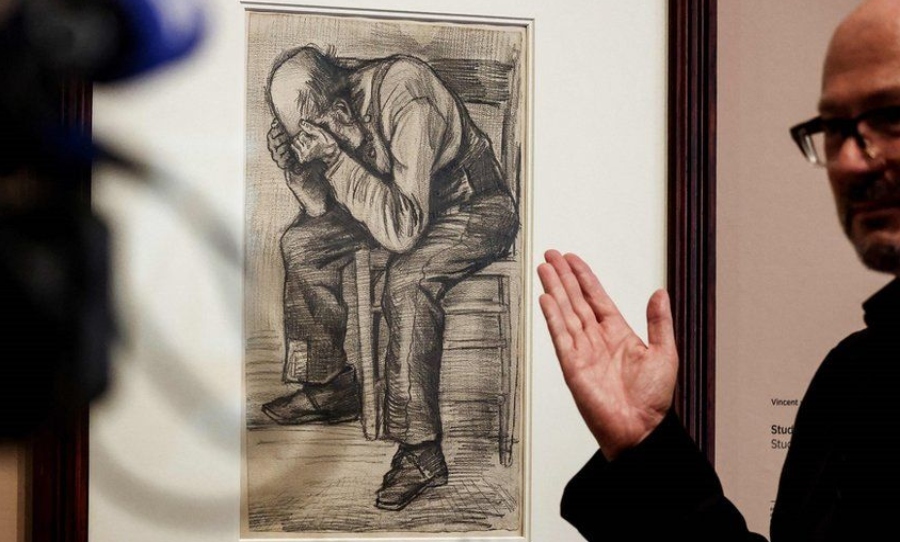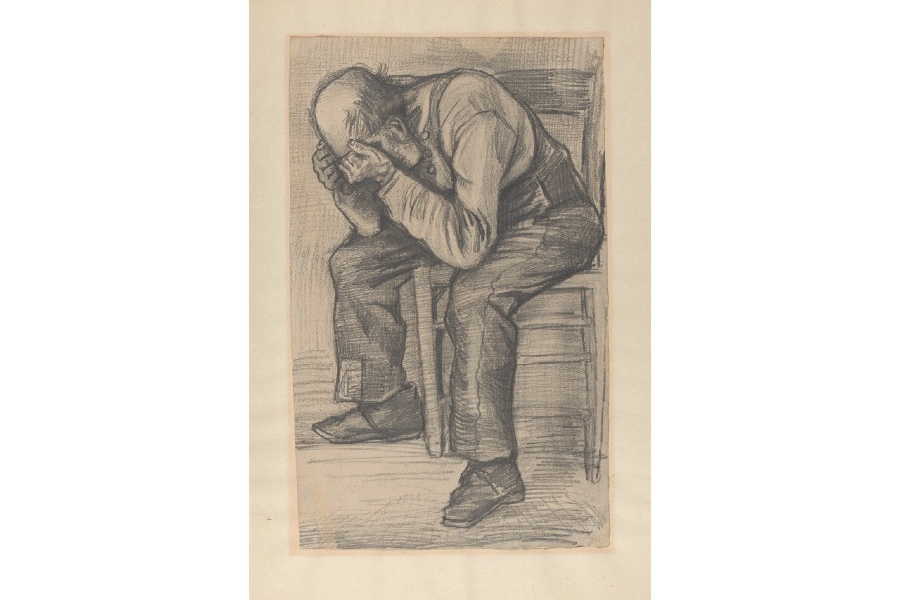A never-before-seen Vincent van Gogh drawing has been recently discovered and is now on display for the world to admire.
The drawing depicts an exhausted old man and has been titled Study for Worn Out.
The Van Gogh Museum revealed that the piece was drawn in 1882, marking the early days of the famous artist’s career.

Despite its age, the Amsterdam Museum displayed the artwork for the first time on Thursday, after it had been sitting in a Dutch family’s private collection for over a century.
The piece will be visible to the public until January 2, before returning to the private collection.
Signed “Vincent”, the artwork depicts an elderly labourer dressed in boots, trousers and a waistcoat bending over with his head in his hands.
Senior researcher at the Van Gogh Museum, Teio Meedendorp, told the BBC that it was “absolutely impossible” to say how much the piece was worth.
🎉We have discovered a new work by Vincent van Gogh! Study for ‘Worn Out’ from 1882 is added to Van Gogh’s oeuvre. What do you think of this study? On display in the museum from tomorrow on. Find out more: https://t.co/LyjgpLkRtv pic.twitter.com/86fu9XRbeY
— Van Gogh Museum (@vangoghmuseum) September 16, 2021
The work appears to be an earlier version of a preferred piece, currently displayed under the title “Worn Out”. This gives researchers great insight into Van Goghs working process as an early artist.
As expected, the team at The Van Gogh Museum, were “delighted with this discovery” and felt like they had contributed to their specialty.
The owner of the artwork, who chooses to remain anonymous, was enquiring with the museum about the likelihood of the work being attributed to Vincent Van Gogh.
Meedendorp stated that “in stylistic terms, it fits perfectly with the many figures we know from Van Goghs time in the Hague and the connect with ‘Worn Out’ is obvious”.
A Dutch museum unveiled a previously unknown work by Vincent van Gogh called ‘Worn Out’ https://t.co/UN27fkyYh2 pic.twitter.com/Pc8TIts8Js
— Reuters (@Reuters) September 17, 2021
Adding to this the piece features all one would expect from a Van Gogh from this period. A thick carpenter’s pencil was used on coarse watercolour paper, fixed with a solution of water and milk.
Damage to the corners on the back of the drawing are attributed to Van Gogh’s customary attachment of his artwork to drawing boards using wads of starch.




